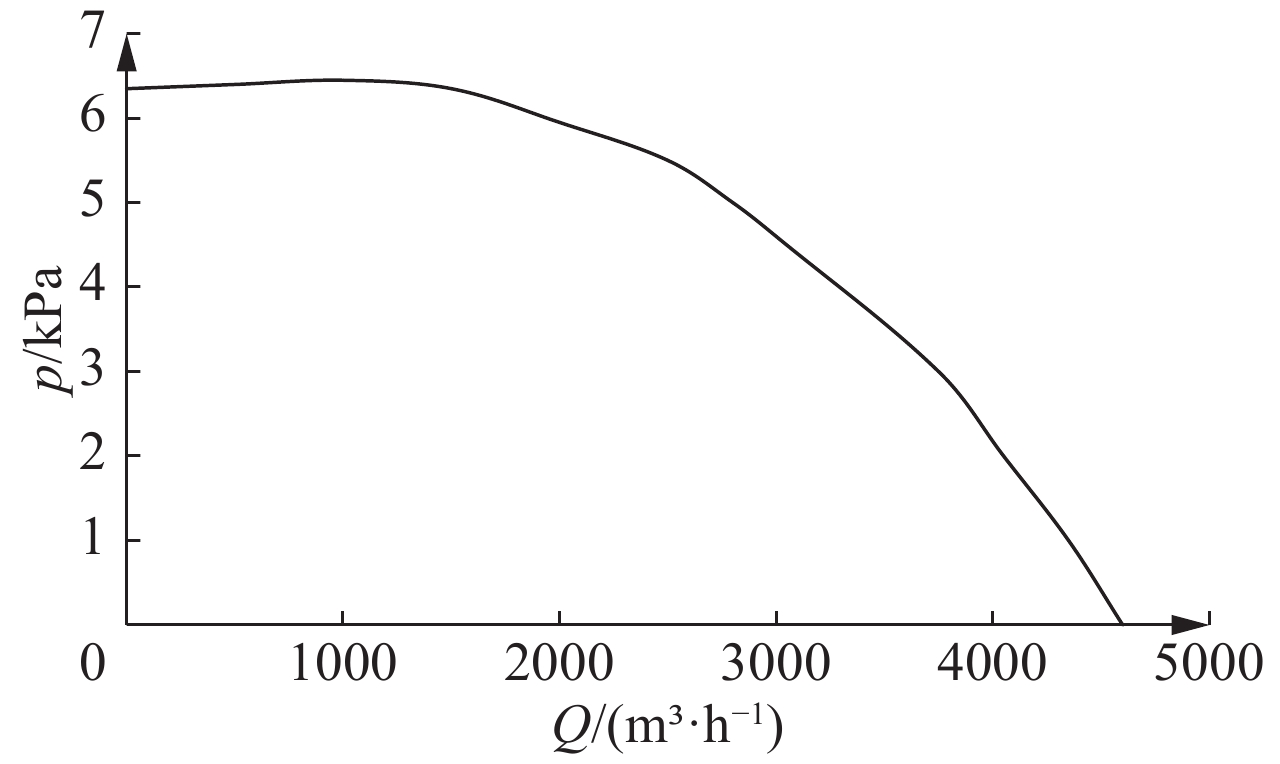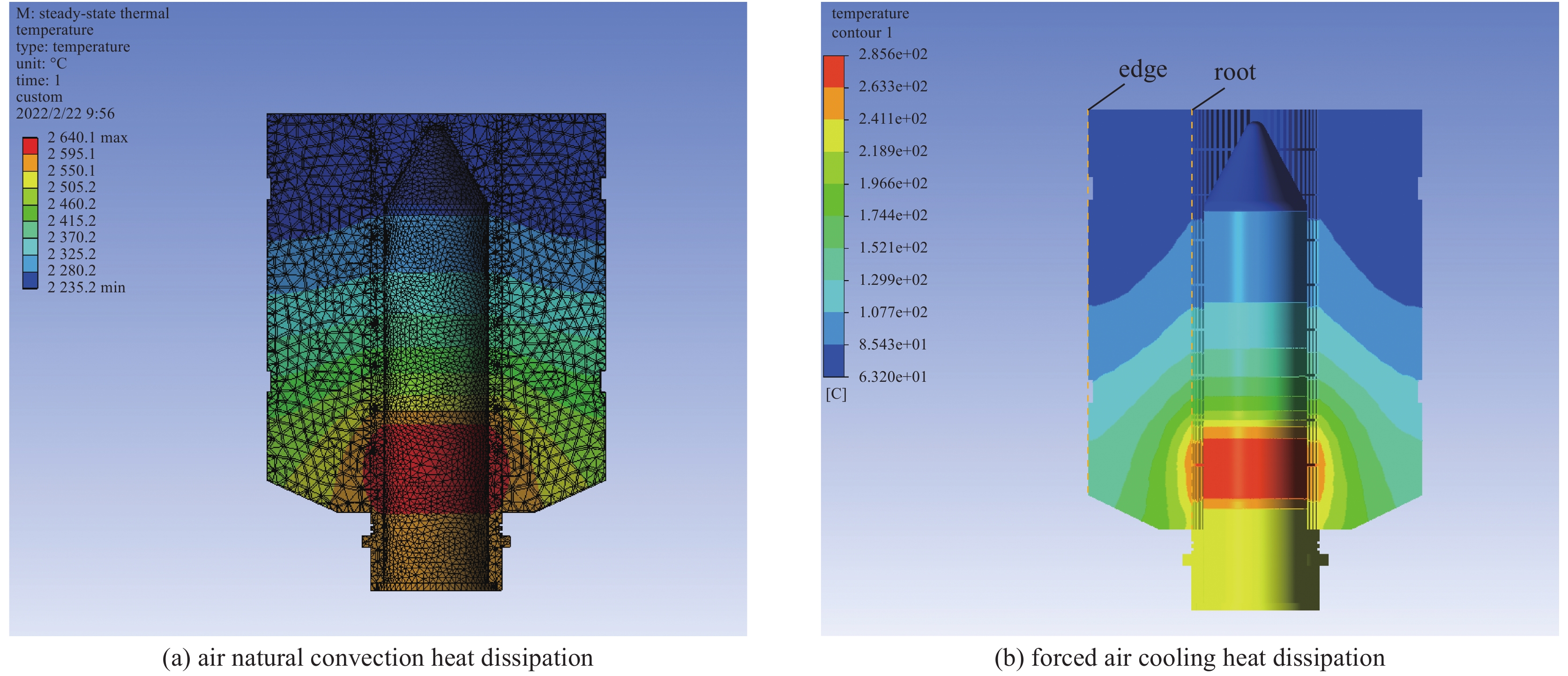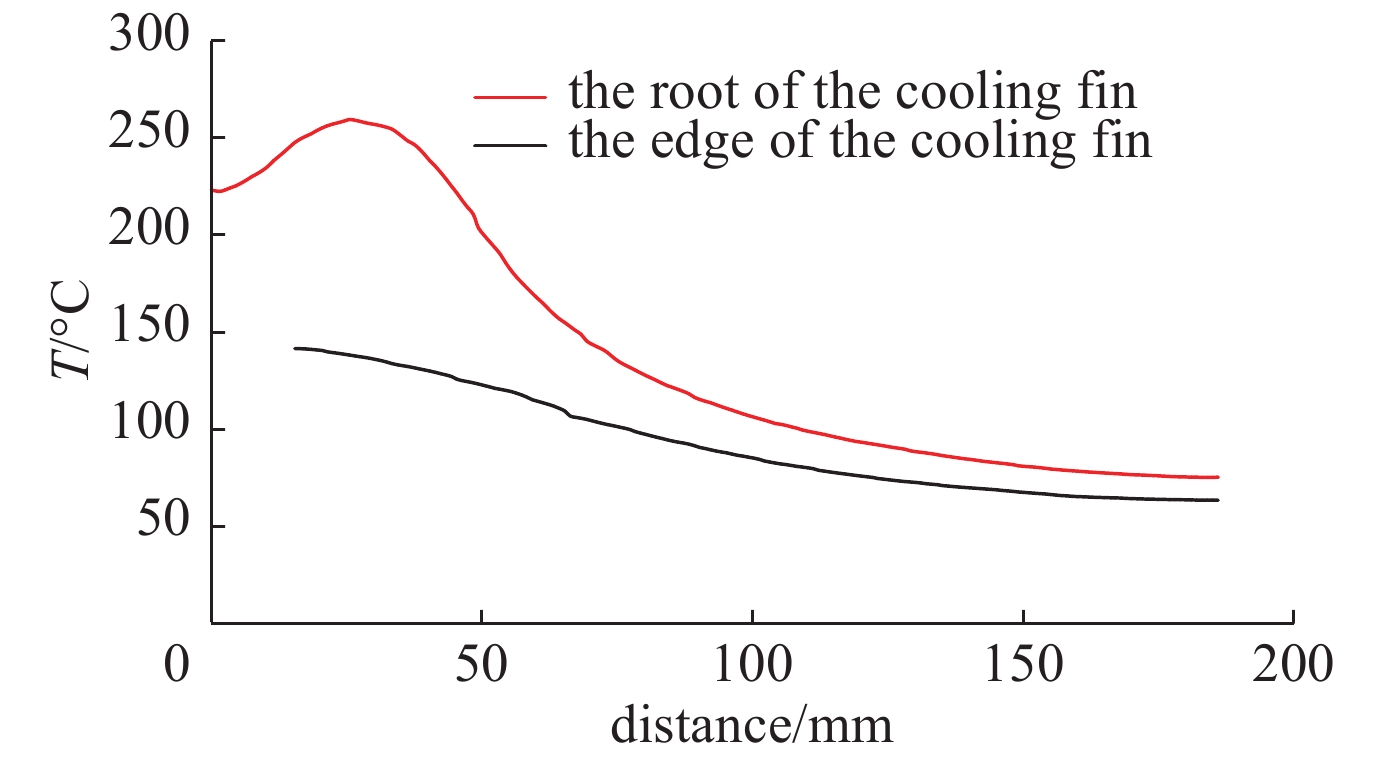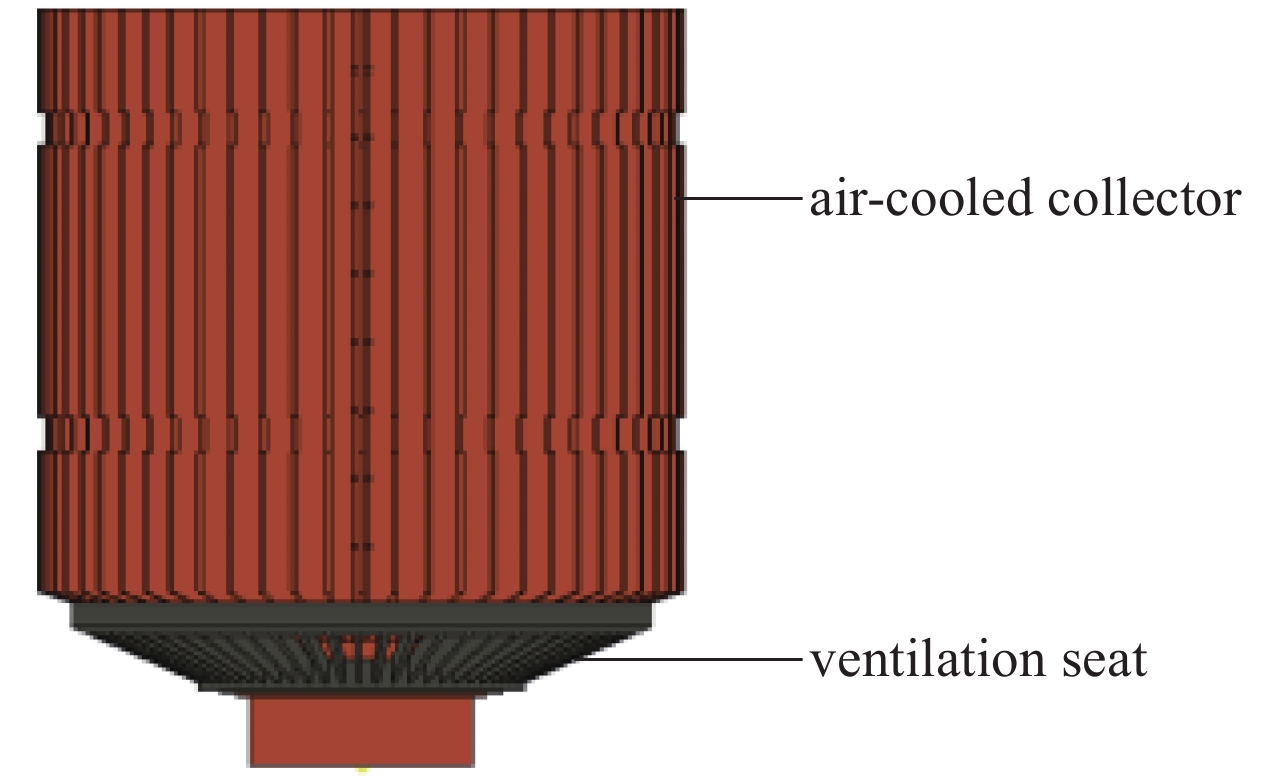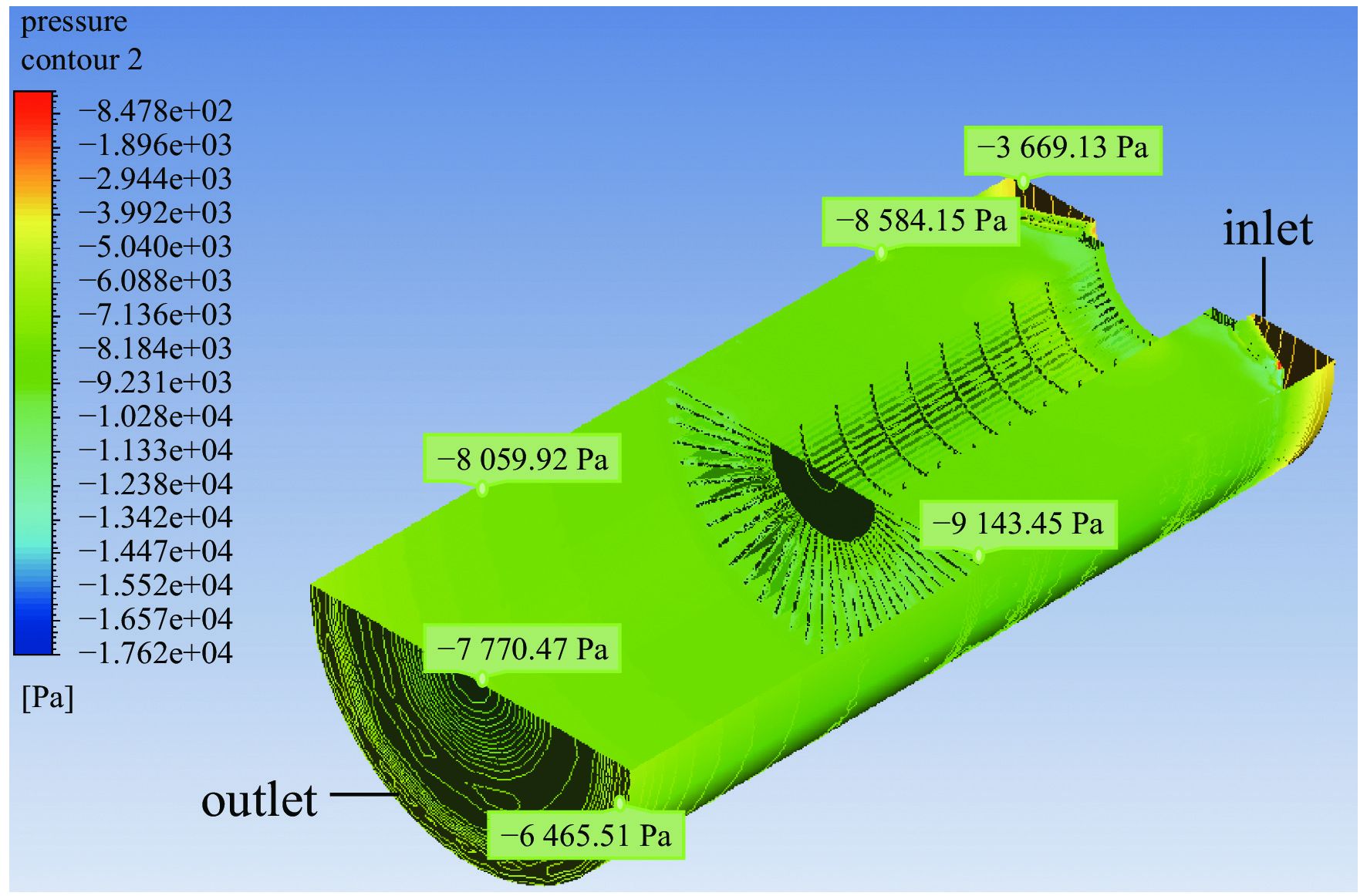Design of high efficiency forced air cooling heat dissipation system for collector of high-power klystron
-
摘要: 为解决大功率小型化速调管收集极在强迫风冷条件下的高效散热问题,以某大功率速调管为研究对象,介绍了一种大功率高效风冷收集极系统的设计方法。利用ANSYS有限元软件对收集极的强迫风冷散热特性进行模拟计算,分析比较了非均匀热流密度加载方式下不同散热翼片结构对风冷收集极的风阻和最高温度的影响,确定了散热翼片的尺寸和数量。为进一步提高风冷收集极系统的对流换热效果,对收集极入风口的结构进行改进,收集极内表面最高温度降低了22 ℃。采用风冷收集极风阻的计算模型对风阻进行验证,仿真结果与理论值相差2.2%。最后对采用该风冷收集极系统的大功率速调管进行测试,实验测试的最高温度与仿真结果相差1.8%,验证了该风冷收集极系统设计的合理性和有效性。Abstract: To solve the problem of efficient heat dissipation of high-power miniaturized klystron collector under forced air cooling condition, this paper takes a high-power klystron as the research object, and introduces a design method of high-power and efficient air cooling collector system. ANSYS finite element software is used to simulate and calculate the forced air cooling heat dissipation characteristics of the collector. The effects of different cooling fin structures on the wind resistance and maximum temperature of the collector under non-uniform heat flux loading are analyzed and compared. The size and number of cooling fins are determined. To further improve the convective heat transfer effect of the air cooling collector system, the structure of the inlet of the collector is improved and the maximum temperature of the inner surface of the collector is reduced by 22 ℃. The calculation model of the wind resistance of the air cooling collector is used to verify the wind resistance. The difference between the simulation results and the theoretical value is 2.2%. Finally, the high-power klystron with the air cooling collector system is tested. The maximum temperature difference between the experimental and simulation results is 1.8%, which verifies the rationality and effectiveness of the design of the air cooling collector system.
-
Key words:
- high-power klystron /
- air cooling collector /
- cooling fins /
- temperature /
- wind resistance
-
表 1 空气的物性参数
Table 1. Physical parameters of air
T/℃ $ \rho $/(kg∙m−3) ${C}_{{\rm{p}}}$/(kcal·kg−1·℃−1) $\; \mu $/(kg∙m−1∙s−1) 30 1.165 0.24 18.6×10−6 表 2 风冷收集极系统的结构参数
Table 2. Structural parameters of air cooling collector system
$ \mathit{K} $/mm2 d/mm A/mm2 $ {\mathit{A}}_{0} $/mm2 L/mm 6691 8 13324 20612 400 表 3 实验测试和仿真分析结果对比
Table 3. Comparison of experimental test and simulation analysis results
method maximum temperature/℃ minimum temperature/℃ mean temperature/℃ experimental test 191.6 55.4 110.8 simulation analysis 195.2 53.8 116.2 -
[1] 丁耀根. 大功率速调管的技术现状和最新进展[J]. 真空电子技术, 2020(1):1-25. (Ding Yaogen. Technical status and latest progress of high power klystrons[J]. Vacuum Electronics, 2020(1): 1-25 [2] 吴瑶. 相对论速调管收集极的散热技术研究[D]. 成都: 电子科技大学, 2016: 7-28Wu Yao. Research on heat dissipation technology of the collector of relativistic klystron amplifier[D]. Chengdu: University of Electronic Science and Technology, 2016: 7-28 [3] Gahlaut V, Alvi P A, Ghosh S K. Thermal and structural analysis of co-axial coupler used in high power helix traveling-wave tube[J]. Frequenz, 2014, 68(7/8): 329-333. [4] 周明干, 李琛, 杨明华. 大功率行波管功放的强迫风冷散热设计[J]. 真空电子技术, 2016(4):64-66. (Zhou Minggan, Li Chen, Yang Minghua. Thermal design of forced air cooling of high-power microwave power amplifer[J]. Vacuum Electronics, 2016(4): 64-66 doi: 10.3969/j.issn.1002-8935.2016.04.017 [5] 束峰涛. 一种风冷行波管的热设计[J]. 电子机械工程, 2005, 21(6):15-17,59. (Shu Fengtao. Thermal design of air-cooled TWT[J]. Electro-Mechanical Engineering, 2005, 21(6): 15-17,59 doi: 10.3969/j.issn.1008-5300.2005.06.004 [6] 左向华, 张益林, 王宇红, 等. C波段高效风冷大功率速调管[J]. 真空电子技术, 2010(3):47-48. (Zuo Xianghua, Zhang Yilin, Wang Yuhong, et al. High efficiency, forced air cooling and high power C-band klystron[J]. Vacuum Electronics, 2010(3): 47-48 doi: 10.3969/j.issn.1002-8935.2010.03.012 [7] 周军, 欧阳佳佳, 刘秀, 等. 高平均功率风冷收集极设计[J]. 真空电子技术, 2018(1):57-59. (Zhou Jun, Ouyang Jiajia, Liu Xiu, et al. Design of high-average-power forced air cooling collectors[J]. Vacuum Electronics, 2018(1): 57-59 [8] 丁耀根. 大功率速调管的设计制造和应用[M]. 北京: 国防工业出版社, 2010Ding Yaogen. Design, manufacture and application of high power klystron[M]. Beijing: National Defense Industry Press, 2010 [9] Konnov A V, Nikitin A P, Akimov P I, et al. Thermal analysis of multibeam klystron collector with forced air cooling[C]//2014 Tenth International Vacuum Electron Sources Conference (IVESC). 2014: 1-2. [10] 邵强, 黄南, 熊辉, 等. 功率组件中强迫风冷散热器风道的风阻估算与风机选型[J]. 大功率变流技术, 2017(2):38-41. (Shao Qiang, Huang Nan, Xiong Hui, et al. Air resistance estimation of air-forced cooling heat sink duct and fan selection in power module[J]. High Power Converter Technology, 2017(2): 38-41 [11] 杨春, 高红斌. 流体力学泵与风机[M]. 北京: 中国水利水电出版社, 2011Yang Chun, Gao Hongbin. Fluid mechanics pumps and fans[M]. Beijing: China Water Resources and hydropower Press, 2011 [12] Gahlaut V, Latha A M, Sharma R K, et al. Thermal management techniques for novel single-stage collector of THz folded waveguide TWT[J]. IEEE Transactions on Plasma Science, 2021, 49(2): 689-694. doi: 10.1109/TPS.2020.3047423 [13] 张忠海. 电子设备中高功率器件的强迫风冷散热设计[J]. 电子机械工程, 2005, 21(3):18-21. (Zhang Zhonghai. Thermal design of forced air cooling of high-power components in electronic equipments[J]. Electro-Mechanical Engineering, 2005, 21(3): 18-21 doi: 10.3969/j.issn.1008-5300.2005.03.006 [14] 江学平. 集中热源对散热器换热性能的影响及其解决方案[D]. 南京: 南京航空航天大学, 2005Jiang Xueping. Influence of centralized heat supply on heat exchange property of radiator & the solutions[D]. Nanjing: Nanjing University of Aeronautics and Astronautics, 2005 [15] Ruuskanen V, Nerg J, Niemelä M, et al. Effect of radial cooling ducts on the electromagnetic performance of the permanent magnet synchronous generators with double radial forced air cooling for direct-driven wind turbines[J]. IEEE Transactions on Magnetics, 2013, 49(6): 2974-2981. doi: 10.1109/TMAG.2013.2238679 [16] 李辉. 一种应用于实际工程的强迫风冷散热设计方法探析[J]. 机电信息, 2013(9):144-145. (Li Hui. Analysis of a forced air cooling design method for practical engineering[J]. Mechanical and Electrical Information, 2013(9): 144-145 -





 下载:
下载:
